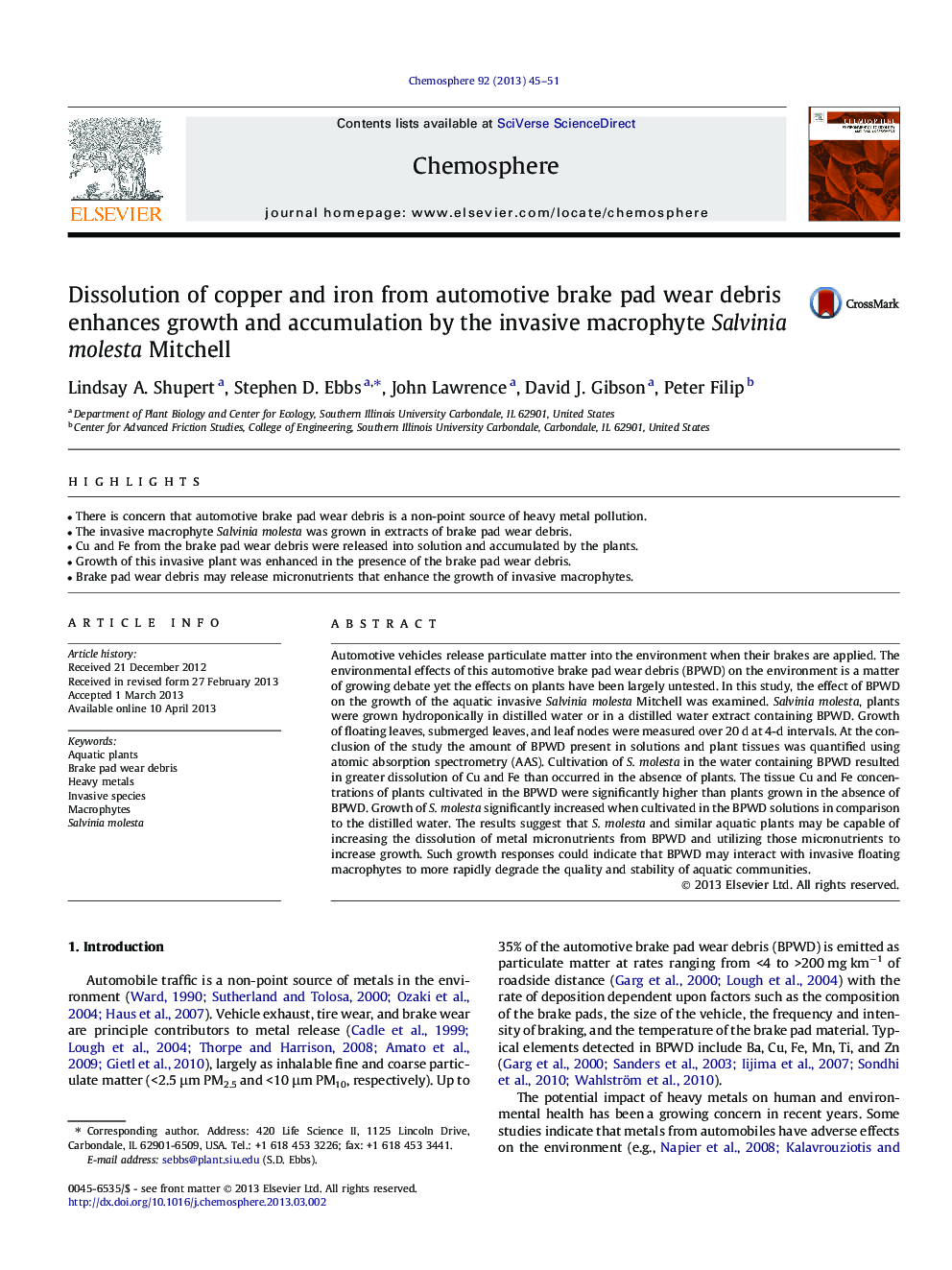| Article ID | Journal | Published Year | Pages | File Type |
|---|---|---|---|---|
| 4409321 | Chemosphere | 2013 | 7 Pages |
•There is concern that automotive brake pad wear debris is a non-point source of heavy metal pollution.•The invasive macrophyte Salvinia molesta was grown in extracts of brake pad wear debris.•Cu and Fe from the brake pad wear debris were released into solution and accumulated by the plants.•Growth of this invasive plant was enhanced in the presence of the brake pad wear debris.•Brake pad wear debris may release micronutrients that enhance the growth of invasive macrophytes.
Automotive vehicles release particulate matter into the environment when their brakes are applied. The environmental effects of this automotive brake pad wear debris (BPWD) on the environment is a matter of growing debate yet the effects on plants have been largely untested. In this study, the effect of BPWD on the growth of the aquatic invasive Salvinia molesta Mitchell was examined. Salvinia molesta, plants were grown hydroponically in distilled water or in a distilled water extract containing BPWD. Growth of floating leaves, submerged leaves, and leaf nodes were measured over 20 d at 4-d intervals. At the conclusion of the study the amount of BPWD present in solutions and plant tissues was quantified using atomic absorption spectrometry (AAS). Cultivation of S. molesta in the water containing BPWD resulted in greater dissolution of Cu and Fe than occurred in the absence of plants. The tissue Cu and Fe concentrations of plants cultivated in the BPWD were significantly higher than plants grown in the absence of BPWD. Growth of S. molesta significantly increased when cultivated in the BPWD solutions in comparison to the distilled water. The results suggest that S. molesta and similar aquatic plants may be capable of increasing the dissolution of metal micronutrients from BPWD and utilizing those micronutrients to increase growth. Such growth responses could indicate that BPWD may interact with invasive floating macrophytes to more rapidly degrade the quality and stability of aquatic communities.
